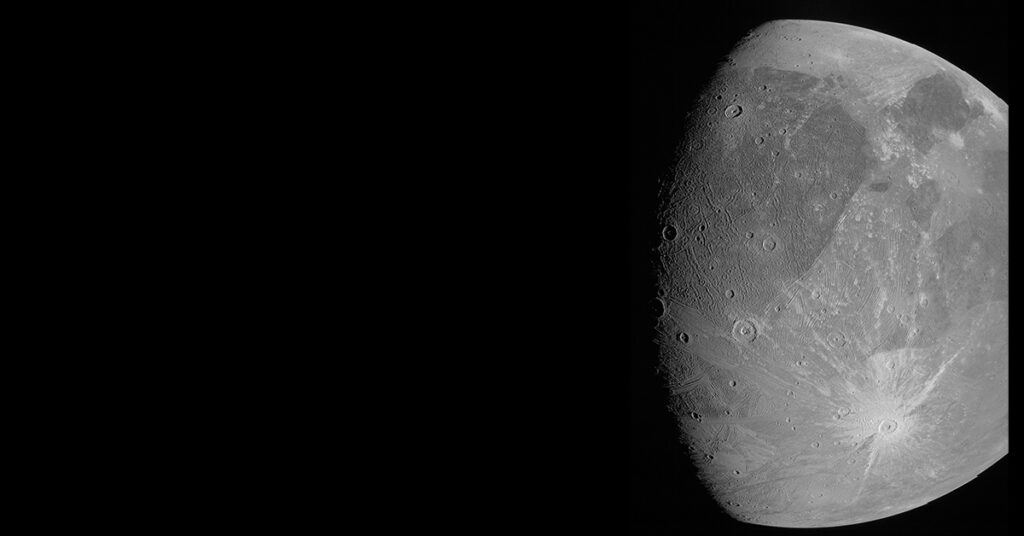Insight into our solar system’s largest moon

Professor Geoffrey Collins quoted in Space.com article on Ganymede
Space.com recently featured Wheaton College Professor of Geology Geoffrey Collins in an article discussing NASA images of Jupiter’s moon, Ganymede. The image data, collected from NASA’s spacecraft Juno in June 2021, provide a more accurate and complete picture of the moon’s ice-covered surface.
The March 21 Space.com article captured comments Collins made at the Lunar and Planetary Science Conference, which took place from March 7 through 11 in Texas.
Ganymede, which is larger than the planet Mercury, is our solar system’s largest moon. Like the Earth, the moon has an active interior and generates its own magnetic field. Many scientists consider the moon a prime candidate for the existence of primitive life forms due to the suspected presence of a massive underground ocean of salty water.

Collins reported that the NASA images of Ganymede show impact craters as large as 60 miles wide, as well as several smaller craters 25 to 30 miles wide. These features were missed in images of the moon taken in 1979 from NASA’s Voyager 1 mission and the Galileo spacecraft in the mid-1990s.
“We missed some really big impact craters that we just couldn’t see in the Voyager data,” said Collins at the conference, according to the article. “This should be a cautionary tale for trying to map things off just one image with one lighting angle, one viewing angle.”
The new pictures also reveal multiple features called calderas, suggesting a much more intense volcanic activity on the moon than scientists expected previously, Collins said in the article.
“We have found caldera-like features, similar to those that we have seen previously in other parts of Ganymede,” he said. “It definitely makes us think that we have undercounted these so far. There might be a lot more of these to be found on Ganymede as we get new data.”
In an interview after the conference, Collins said he is in the beginning phases of analyzing the NASA images of Ganymede in greater depth.
“The European Space Agency’s JUICE [Jupiter Icy Moons Explorer] mission will launch a year from now and go into orbit around Ganymede in the 2030s, and our analysis of this Ganymede data from Juno will help them plan ahead,” Collins said.
He is planning student-faculty research this summer to unlock more insights from these data.
